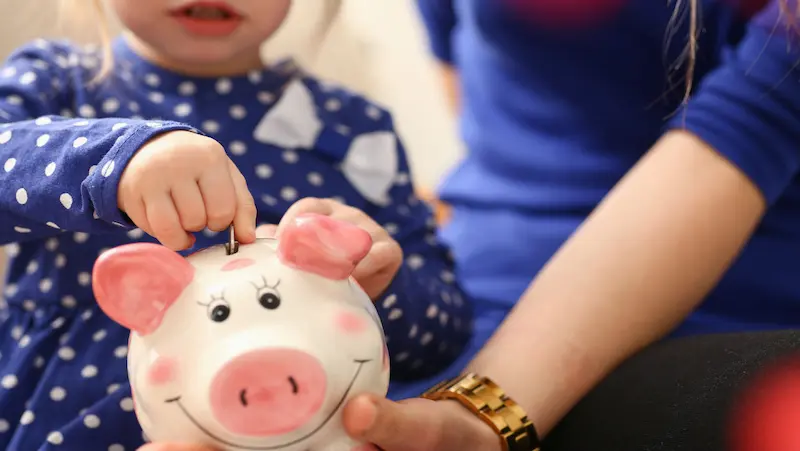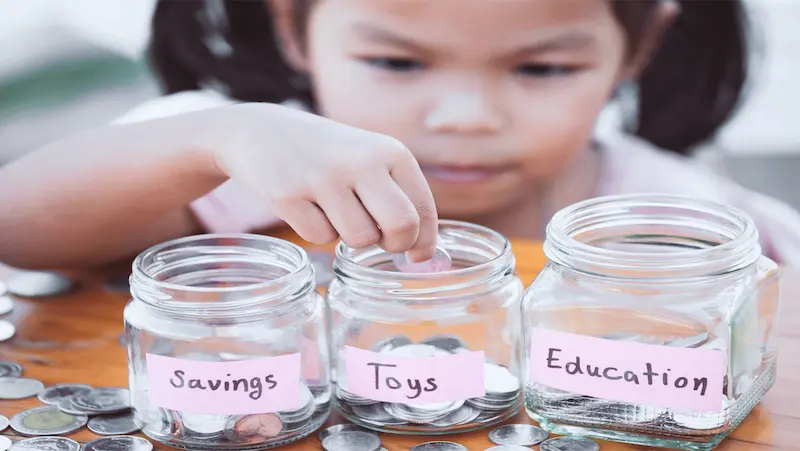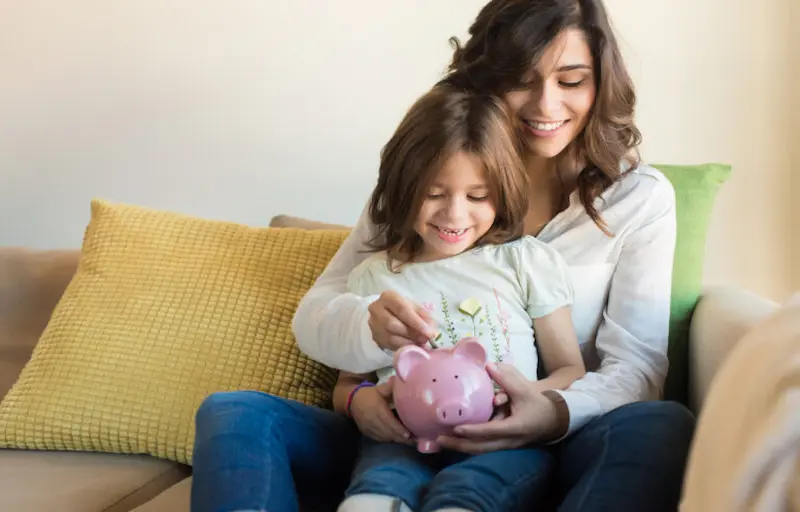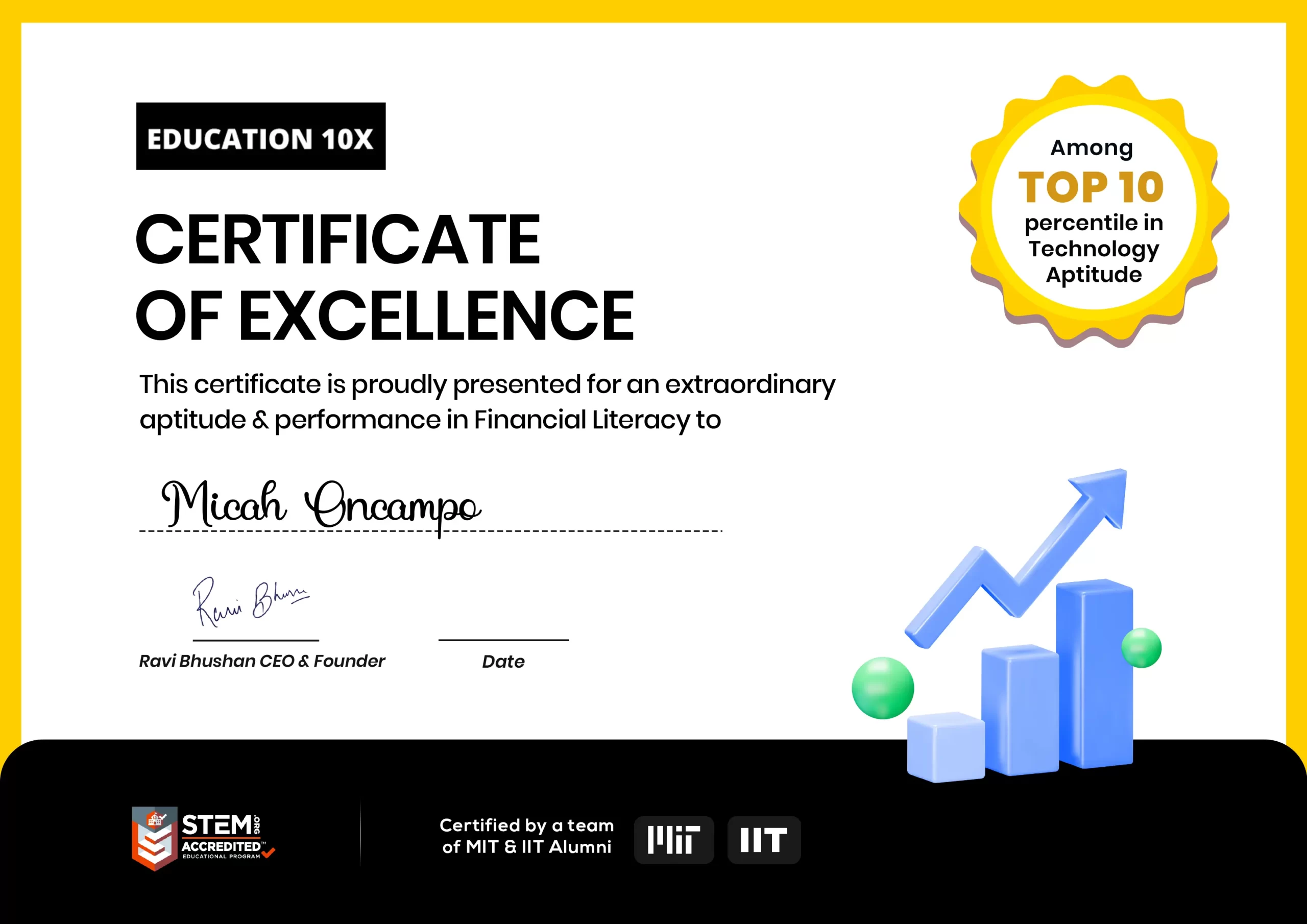In today’s fast-paced and ever-changing world, it is becoming increasingly important to teach children about money and financial responsibility from an early age. Financial literacy is a crucial life skill that empowers individuals to make informed decisions, manage their resources effectively, and achieve long-term financial security.
One valuable tool that has stood the test of time in teaching children about money is the humble piggy bank. The piggy bank not only serves as a practical means of saving money, but also plays a significant role in instilling valuable lessons about saving, budgeting, and setting financial goals.
In this introduction, we will explore the importance of teaching children about money and delve into the role of piggy banks as an educational tool in fostering financial awareness and responsibility. By equipping children with these vital skills, we can help them navigate the complexities of personal finance and pave the way for a financially secure future.
Table of contents
Benefits of Piggy Banks for Kids
Teaching children about financial literacy from an early age is crucial for their future financial well-being. One practical and fun way to introduce them to money management is through the use of piggy banks.
These iconic childhood savings tools not only serve as containers for loose change but also offer valuable educational and psychological benefits that contribute to a child’s overall financial development. In this blog post, we will explore the numerous advantages of using piggy banks to teach children about money.

Encourages Saving Habits
Piggy banks provide an interactive and tangible way for children to develop saving habits. By encouraging kids to collect and save their loose change, they learn the importance of delayed gratification and the satisfaction of watching their savings grow.
This instills the fundamental concept of saving money for future needs or goals, an essential skill that will serve them well throughout their lives.
Teaches Basic Money Management Skills
Introducing children to piggy banks allows them to grasp basic money management skills. As they deposit coins into their piggy banks, children learn to differentiate between various denominations and understand the concept of counting and saving money.
This hands-on experience helps them develop a basic understanding of currency, arithmetic, and the value of different coins.
Cultivates Responsibility and Accountability
Having a piggy bank creates a sense of ownership and responsibility in children. They become accountable for their savings, learn to take care of their piggy bank, and understand that losing or mishandling their savings can have consequences.
BrightChamps gives us the answer for, how to teaches kids about money through valuable lessons that emphasize financial planning and self-control, empowering them with essential life skills for a successful future. Join our program to equip your child with practical knowledge and a strong foundation in financial literacy
This early lesson in accountability fosters a sense of responsibility toward their financial decisions and possessions.
Fosters Goal Setting
Piggy banks offer an opportunity for children to set financial goals and work towards achieving them. Whether it’s saving for a toy, a treat, or a more significant purchase, children can allocate a portion of their earnings or allowances to their piggy banks, gradually accumulating funds until they reach their target.
This process teaches them the value of setting goals, planning, and exercising patience and discipline to achieve desired outcomes.
Builds Basic Math Skills
Using piggy banks provides a practical and engaging way for children to enhance their math skills, making it more than just saving – it’s also about learning through math games for kids. As they count, sort, and organize their coins, they develop basic arithmetic abilities, including addition, subtraction, and even multiplication for higher denominations. This interactive approach not only promotes financial literacy but also fosters a supportive relationship with money from an early age.
These math skills translate into real-life scenarios, where children can apply their knowledge of numbers and calculations.
Develops Emotional Intelligence
Piggy banks contribute to the development of emotional intelligence in children. Saving money and achieving financial goals can evoke a range of emotions, such as excitement, patience, self-control, and pride.
Through the process of using piggy banks, children learn to manage these emotions, understand delayed gratification, and make informed decisions about their spending and saving habits.
Factors to Consider When Choosing a Piggy Bank
When it comes to purchasing a new product, whether it’s a gadget, furniture, or clothing item, we all strive to find the perfect fit. However, with the myriad of options available in the market, selecting the right one can often feel overwhelming.
That’s why it’s essential to delve into the features that truly matter. In this article, we will explore different aspects such as material, design, size, and functionality, helping you make informed decisions and find the ideal product that meets your needs.

Material
The material used in a product plays a vital role in its overall quality, durability, and aesthetic appeal. Depending on the item you’re considering, materials can vary greatly. For instance, when choosing furniture, hardwoods like oak or walnut offer durability and timeless elegance, while synthetic materials may provide affordability and easy maintenance.
In electronics, high-quality plastics and metals enhance longevity and structural integrity. Understanding the pros and cons of different materials can guide you in selecting a product that aligns with your preferences and requirements.
Design
Design encompasses both aesthetic appeal and functionality. While personal taste plays a role in selecting a design, it’s crucial to consider the practicality of the product as well. For example, in furniture, ergonomic designs prioritize comfort and support, while in electronics, sleek and intuitive interfaces enhance usability.
Assess how the design of a product complements its intended purpose and how it fits into your existing environment or lifestyle. Striking a balance between aesthetics and functionality ensures satisfaction in the long run.
Size
Size considerations depend on the intended use and available space. Whether it’s a smartphone, a piece of clothing, or kitchen appliances, the size should be tailored to your needs. In clothing, finding the right size ensures comfort and proper fit. For electronics, the size might impact portability and ease of use.
Evaluate your requirements and assess whether a compact size suits your lifestyle or if a larger size is necessary for enhanced functionality. Keep in mind that size can influence convenience and usability, so choose wisely.
Functionality
Functionality refers to the features and capabilities of a product that enable it to perform its intended tasks. Understanding your specific needs is crucial when evaluating functionality. For example, in smartphones, features like camera quality, processing power, and battery life are essential considerations.
Similarly, in kitchen appliances, functions such as programmability, energy efficiency, and ease of cleaning become crucial factors. Prioritize the features that align with your requirements and ensure they enhance your overall experience with the product.
Top Piggy Banks for Kids: Reviews and Recommendations
Teaching kids about money management from an early age is an essential life skill. A piggy bank serves as a tangible tool to introduce children to the concept of saving and budgeting. These delightful money storage containers not only help inculcate financial responsibility but also make the process enjoyable and engaging for kids.
Know more about financial literacy activities for kids in this article.
In this article, we present a selection of popular piggy banks for kids, accompanied by detailed reviews and recommendations. Let’s explore these fun and educational options that can help your child embark on a lifelong journey of financial literacy.

DIY Piggy Bank Kits
For a more personalized touch, DIY piggy bank kits provide an engaging and creative activity for kids. These kits typically include a ceramic or wooden piggy bank and various art supplies like paints and brushes.
Children can decorate and customize their piggy banks, adding their own unique flair. This hands-on approach not only teaches kids about saving but also nurtures their creativity and fine motor skills.
Character-Themed Piggy Banks
Character-themed piggy banks featuring beloved cartoon or movie characters are a hit among children. Whether it’s superheroes, princesses, or cuddly animals, these piggy banks appeal to kids’ interests and capture their imagination.
The vibrant designs and familiar characters make saving money a joyful experience. Look for sturdy materials and secure closures to ensure longevity and ease of use.
Smart Piggy Banks
In the age of smartphones and smart devices, there are piggy banks that integrate technology for a more interactive saving experience. These smart piggy banks often connect to mobile apps, allowing kids to set savings goals, track progress, and even earn rewards.
Some models include features like voice recognition and chore management systems, providing a comprehensive financial learning experience.
Tips for Introducing and Using Piggy Banks
Saving money is a vital habit that can lead to financial stability and security, especially when teaching budgeting for kids. However, it can sometimes be challenging to establish regular saving habits, track your progress effectively, and make it engaging for children. That’s why incorporating fun activities for kids into the savings process can make the learning experience both enjoyable and educational.
In this blog post, we will explore five actionable tips to help you encourage consistent saving habits and keep track of your progress along the way. By implementing these strategies, you can develop a strong foundation for financial well-being and achieve your long-term goals.

Set Clear and Realistic Goals
The first step towards developing regular saving habits is to set clear and realistic goals. Determine what you are saving for, whether it’s an emergency fund, a down payment for a house, or a dream vacation.
Break down your goals into smaller, manageable targets, and assign specific amounts and deadlines to each one. Having well-defined objectives will provide you with a sense of purpose and motivate you to save regularly.
Create a Budget
Creating and sticking to a budget is essential for effective saving. Take the time to evaluate your income and expenses thoroughly. Identify areas where you can reduce spending and allocate a portion of your income towards savings. This hands-on experience fosters a strong foundation for financial literacy for students and helps instill healthy saving habits that can last a lifetime.
By tracking your expenses and adhering to a budget, you can free up additional funds for saving and avoid unnecessary impulse purchases.
Automate Your Savings
One of the easiest ways to ensure regular savings, especially with a bank account for kids, is to automate the process. Set up an automatic transfer from your checking account to a dedicated savings account each month. By doing this, you eliminate the temptation to spend the money before saving it, fostering responsible financial habits from an early age.
Treat your savings as a fixed expense that must be paid, just like your rent or utility bills. Over time, this consistent saving habit will become ingrained, and you won’t even notice the money leaving your account.
Utilize Technology and Apps
Leverage technology to simplify and streamline your saving habits. Numerous mobile apps and online tools are available that can help you track your expenses, set savings goals, and monitor your progress.
These apps often provide visual representations of your financial health, making it easier to stay motivated and see how far you’ve come. Some apps even offer features like round-up savings, where they automatically round up your purchases and save the difference. Explore different options and find the app that suits your needs and preferences.
Celebrate Milestones and Reward Yourself
Saving money requires discipline and patience, so it’s crucial to celebrate milestones and reward yourself along the way. Whenever you achieve a savings goal or reach a significant milestone, acknowledge your accomplishment and treat yourself within reason.
This positive reinforcement will reinforce the habit of saving and make it more enjoyable. However, ensure that your rewards align with your financial goals and do not derail your progress.
Beyond the Piggy Bank: Additional Money-Saving Ideas for Kids
Teaching children the importance of saving, managing money, and budgeting for kids is an invaluable life skill that will benefit them throughout their lives. While the classic piggy bank is a great starting point, there are numerous creative ways to help children develop good financial habits, all while building a supportive relationship that nurtures their growth and well-being.
In this blog post, we will explore some fun and interactive methods to encourage children to save and manage their money effectively.

Virtual Savings Account
In the digital age, opening a virtual savings account for your child can be a fantastic way to introduce them to banking. Many banks offer specialized accounts for minors, allowing them to save money online.
This interactive experience teaches children about concepts such as interest, deposits, and withdrawals while providing a safe and secure place for their savings.
Goal-Oriented Savings
Help your child set specific savings goals and create a visual representation of those goals. This could be a savings chart or a vision board that showcases what they are saving for. By visualizing their objectives, children will stay motivated and engaged with their savings journey.
To get your hands on more such educational and free resources on coding for kids, robotics courses for kids, game development, etc.
It could be anything from a new toy or game to a bigger goal like saving for a special trip or a college fund.
The Money Jar System
Create a money jar system with labeled jars for different purposes. For example, your child could have jars for spending, saving, and giving. Whenever they receive money, they can distribute it among the jars according to their chosen percentages.
This method not only teaches children the importance of budgeting but also instills the value of charitable giving.
Allowance Management App
Utilize technology by using allowance management apps designed for children. These apps enable kids to track their earnings, set savings goals, and even learn about budgeting and financial responsibility through interactive games and challenges.
With a virtual platform at their fingertips, children can gain valuable insights into personal finance for kids in an engaging and age-appropriate manner.
Entrepreneurial Ventures
Encourage your child to explore their entrepreneurial skills by starting a small business or providing services to neighbors, family, or friends. Whether it’s a lemonade stand, dog-walking, or selling handmade crafts, engaging in these activities teaches children about earning, saving, and managing their profits. It also fosters creativity, responsibility, and a strong work ethic.
Financial Education Games
Introduce financial education games and board games that focus on money management. Games like Monopoly, The Game of Life, or Cashflow for Kids provide hands-on experiences in budgeting, investing, and making financial decisions. These games not only make learning about money enjoyable but also allow children to practice critical thinking and strategic planning.
Savings Match Program
Consider implementing a savings match program where you agree to match a percentage of your child’s savings. For example, for every dollar they save, you contribute an additional 50 cents. This incentive-based system motivates children to save more while understanding the concept of matching contributions—an excellent lesson in maximizing their savings potential.
Conclusion
In conclusion, this article highlights the key points surrounding the use of piggy banks for kids and emphasizes the long-term benefits associated with this traditional saving tool. Throughout the discussion, several important points were made. Firstly, piggy banks provide children with a tangible and interactive way to learn about money management and the importance of saving. By physically depositing coins and bills into a piggy bank, children develop a sense of ownership and responsibility over their finances from an early age.
Secondly, piggy banks teach children the value of patience and delayed gratification. As they accumulate money over time, kids learn that saving requires discipline and perseverance. They begin to understand that setting aside small amounts of money regularly can lead to bigger rewards in the future. This valuable lesson helps children develop crucial skills such as goal-setting, planning, and self-control, which can be applied to various aspects of their lives. In terms of the long-term benefits, the use of piggy banks for kids can have a lasting positive impact. Children who learn to save money from a young age are more likely to develop responsible financial behaviors as adults. They are better equipped to manage their finances, make informed decisions, and resist impulse purchases. These skills can contribute to financial stability, independence, and overall well-being in the long run.
BrightChamps introduces combining the classic piggy bank concept with modern methods to save money online, fostering financial responsibility and maximizing their savings potential. In conclusion, piggy banks provide a valuable tool for teaching children about money, fostering financial literacy, and promoting healthy saving habits. The benefits extend far beyond childhood, as the lessons learned from using piggy banks can shape a child’s financial behavior and mindset for years to come.
By embracing the tradition of piggy banks, we can set our children on a path toward financial responsibility, resilience, and success. Do check out the Brightchamps Blog Page now!
Frequently Asked Questions
A1. Piggy banks are important for kids as they teach them the value of saving money, setting goals, and developing good financial habits from a young age.
A2. Piggy banks help teach children about money by providing a tangible way to save and visually track their progress. They learn about the concepts of earning, saving, and delayed gratification.
A3. When selecting a piggy bank for your child, consider features like durability, accessibility (easy to deposit and withdraw money), educational aspects (clear money counting), and age-appropriate design.
A4. Yes, there are piggy banks that encourage additional saving habits, such as those with separate compartments for different savings goals or ones that come with reward systems for reaching specific milestones.
A5. You can introduce the concept of saving with a piggy bank by explaining its purpose, setting achievable saving goals, encouraging regular deposits, and involving your child in decision-making about what to save for.
A6. You can start using a piggy bank for your child as early as three or four years old. It’s never too early to introduce the concept of saving and financial responsibility.
A7. Yes, a piggy bank can be used for more than just saving money. It can be used to store small valuable items, teach organizational skills, or as a decorative item in a child’s room.


 We are an army of educators and passionate learners from BrightChamps family, committed to providing free learning resources to kids, parents & students.
We are an army of educators and passionate learners from BrightChamps family, committed to providing free learning resources to kids, parents & students.







